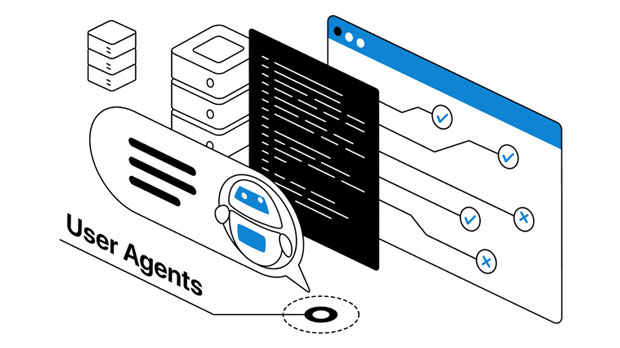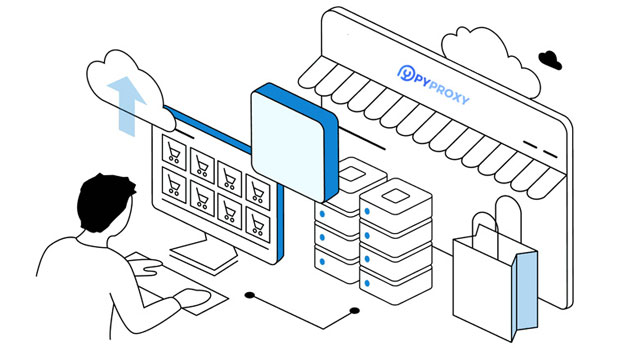How helpful is the SOCKS5 proxy for Google Chrome privacy?
In the digital age, privacy concerns have become a significant issue for internet users, especially when using popular web browsers like Google Chrome. A socks5 proxy is often regarded as a useful tool to enhance online privacy. But how effective is it in protecting users' privacy while browsing through Chrome? This article explores the potential benefits and limitations of using a SOCKS5 proxy with Google Chrome, addressing key privacy issues, how it works, and whether it is enough to safeguard users from tracking, data breaches, or other online threats. We will analyze in depth how socks5 proxies function, their impact on privacy, and when they might fall short in providing comprehensive protection. Understanding SOCKS5 Proxy and Its MechanismBefore diving into the privacy benefits of SOCKS5 proxies for Google Chrome, it's essential to understand what SOCKS5 is and how it operates. SOCKS5 is a type of internet protocol that facilitates the transmission of data between a client (your browser) and a server through an intermediary server (the proxy server). Unlike other proxies, such as HTTP or HTTPS proxies, SOCKS5 operates at a lower level and can handle any kind of internet traffic, including web browsing, torrents, and even email.The SOCKS5 proxy achieves privacy by masking the user's IP address. When you connect to a website via SOCKS5, your real IP address is replaced with that of the proxy server, making it more difficult for websites, advertisers, or malicious entities to track your online activities. However, the key question is: Does this truly enhance privacy when using Google Chrome?How SOCKS5 Proxy Improves Privacy on Google ChromeGoogle Chrome, while offering various built-in security features, is often criticized for its data collection practices. The browser collects information about browsing history, search queries, and even usage patterns, which are used to personalize advertisements and improve services. Using a SOCKS5 proxy can enhance privacy in several ways:1. Masking Your IP AddressThe primary privacy benefit of using a SOCKS5 proxy is that it masks your real IP address. Every time you connect to a website, your browser sends a request containing your IP address, which can be used to identify you, track your location, and build a digital profile of your activities. By routing your traffic through a SOCKS5 proxy, your real IP address is hidden, and the website only sees the IP of the proxy server. This reduces the ability of websites to track your online behavior and prevents location-based tracking.2. Bypassing Geo-Restrictions and CensorshipIn addition to improving privacy, SOCKS5 proxies can help bypass geo-restrictions and censorship imposed by governments, networks, or services. For example, if you're browsing from a country where certain websites are blocked, a SOCKS5 proxy can route your traffic through a server located in a different country, allowing you to access restricted content. While this aspect is not directly related to privacy, it can help maintain an open and uncensored browsing experience, which is essential for users concerned about privacy rights.3. Protecting Against Tracking and Targeted AdsAnother privacy advantage of SOCKS5 proxies is their ability to reduce the effectiveness of online tracking. Many websites use cookies, tracking pixels, and other methods to monitor user behavior for the purpose of targeted advertising. By masking your real IP address, SOCKS5 proxies make it harder for advertisers to correlate your online activities with your identity, reducing the volume and accuracy of targeted ads you receive. While it won't block all tracking methods, it can reduce some of the most common and invasive types of online tracking.Limitations of SOCKS5 Proxy for Privacy Protection on Google ChromeDespite the advantages, SOCKS5 proxies have limitations that users need to be aware of, especially when using them with Google Chrome. Understanding these limitations is crucial for anyone considering using a SOCKS5 proxy as their primary privacy tool.1. No EncryptionOne of the most significant drawbacks of SOCKS5 proxies is the lack of encryption. Unlike VPNs, which encrypt your entire internet connection, SOCKS5 proxies only route traffic through a proxy server without encrypting the data. This means that while your IP address is hidden, your data can still be intercepted by malicious actors, hackers, or even your Internet Service Provider (ISP) if you're on an unsecured network. For users seeking a higher level of security and privacy, relying solely on SOCKS5 proxies might not be enough.2. Limited Protection Against FingerprintingWhile SOCKS5 proxies do a good job of masking your IP address, they do not prevent browser fingerprinting. Browser fingerprinting is a technique that tracks unique identifiers of your device and browser configuration, such as screen resolution, plugins, fonts, and other characteristics. Even if your IP address is hidden, these unique identifiers can still be used to track your activities across different websites, making it possible for third parties to recognize and profile you. Therefore, SOCKS5 proxies, by themselves, cannot fully protect against sophisticated tracking techniques like fingerprinting.3. Dependency on Proxy Server's TrustworthinessUsing a SOCKS5 proxy also introduces a level of trust dependency on the proxy server. Since the proxy server handles your internet traffic, it has the potential to monitor or log your activities. If the server provider is malicious or not trustworthy, they could compromise your privacy. It's essential to choose a reliable and reputable proxy server provider. Even though SOCKS5 offers privacy benefits, the security and privacy of your browsing experience depend on the integrity of the server you're routing your traffic through.4. Potential Performance IssuesWhile this is not directly related to privacy, using a SOCKS5 proxy can impact your browsing speed. Since your data has to travel through a proxy server, it can introduce latency or slow down your internet connection. This could affect your browsing experience, especially for activities that require high-speed internet, such as video streaming or online gaming.When Should You Use SOCKS5 for Privacy on Google Chrome?Despite the limitations, SOCKS5 proxies can still be a useful tool for improving privacy on Google Chrome, particularly when used in combination with other privacy tools. For users who are primarily concerned with masking their IP address and avoiding simple tracking methods, SOCKS5 proxies can provide a reasonable level of protection.However, for those looking for more comprehensive privacy protection, such as encryption of internet traffic and protection against sophisticated tracking techniques like fingerprinting, a VPN might be a more suitable solution. Combining a SOCKS5 proxy with additional tools like browser privacy extensions (e.g., anti-tracking extensions or ad-blockers) can offer a more robust privacy solution.Conclusion: Is SOCKS5 Enough for Protecting Privacy on Google Chrome?In conclusion, SOCKS5 proxies offer a valuable layer of privacy protection by masking your IP address and helping to reduce tracking and censorship. However, they are not a complete privacy solution, especially when compared to other privacy tools like VPNs or browser-based privacy enhancements. Users seeking a high level of privacy should consider supplementing their use of SOCKS5 proxies with additional tools that provide encryption, protection against browser fingerprinting, and more comprehensive online security measures.Ultimately, the effectiveness of SOCKS5 proxies depends on your specific privacy needs. If you’re looking for basic anonymity and location masking, SOCKS5 can be a useful tool. But if you require advanced protection against tracking, data interception, or identity theft, combining SOCKS5 proxies with other privacy solutions is the most effective approach.
2025-01-08

























































